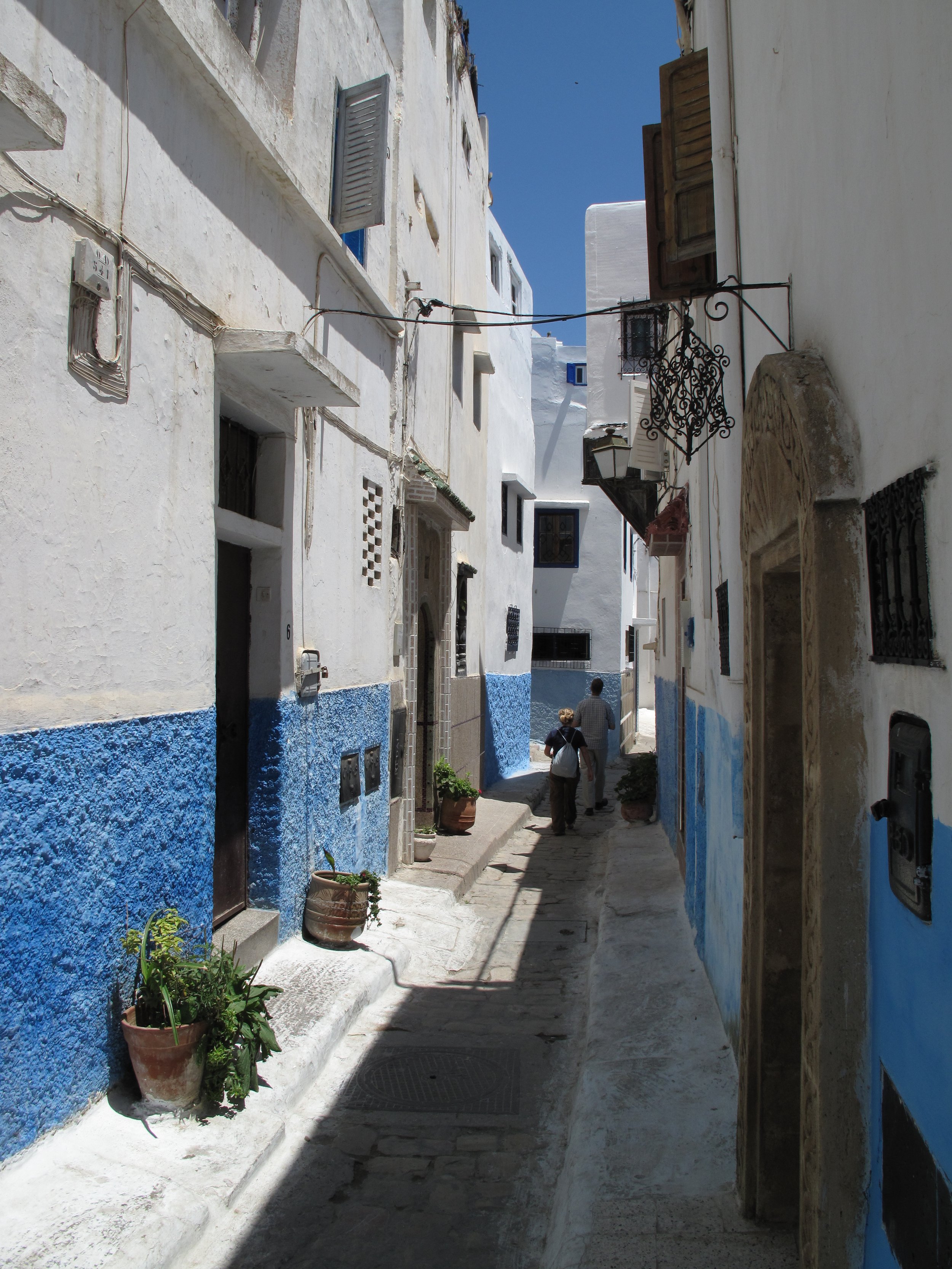Morocco. Magnificent Mosques of Morrocco’s Atlantic Coast
For some, the word Casablanca invokes the 1942 movie featuring Humphrey Bogart and Ingrid Bergman, and possibly a few of its immortal lines such as “Here’s looking at you, kid” or “Play it again Sam.” Located along the Atlantic coastline, Casablanca is Morocco’s largest city (3.2 million) and the country’s center of commerce. Among other distinctions, the city is host to one of the largest artificial ports in Africa. Established as Anfa by Berbers in the 7th century BC, the city was later incorporated into the Phoenician and Roman Empires. In 744 AD Anfa became part of the Berber Kingdom of Barghawata. Beginning in the 12th century, Arab tribes arrived and mixed with the native Berber population. When the French came in 1906, Casablanca had a population of just 13,000. Taking control of Morocco in 1912 through the Treaty of Fez, the French reshuffled the country’s power structure, making Rabat the capital. Casablanca played a prominent role during WWII. When French President Pétan signed an armistice with Nazi Germany in June 1940, he ordered French troops in Morocco to resist an Allied occupation of North Africa. In November 1942, Casablanca was captured during a British-American invasion and later the city’s Berrechid Airfield (now Mohammed V International Airport) became an American airbase. The city also played host to a January 1943 conference involving U.S. President Franklin Roosevelt, French Generals Charles de Gaulle and Henri Giraud, and British Prime Minister Winston Churchill. During the 1940s and 50s the city was the focus of anti-French protests and riots.
On our arrival at Mohammed V International Airport, my students and I took a bus to the Mosque of Hassan II. Featuring a 210-meter-tall minaret, Hassan II is the 2nd largest mosque in North Africa. Positioned on a promontory overlooking the Atlantic Ocean, it was built from ornately carved marble, wood, plaster, and granite. Completed in 1993, the project involved more than 5,000 artisans. Among its innovations is a retractable roof that can be opened during favorable weather. Inside are 56 glass chandeliers and a 200-meter by 200-meter prayer room large enough to hold Paris’s Cathedral of Notre-Dame or Rome’s St. Peter’s Basilica. The mosque can hold 25,000 persons while space outside can accommodate an additional 80,000 worshipers. We toured the main floor of the mosque. I recall some of my students expressing surprise by the absence of furnishings inside.
Located along the Atlantic coastline and 86 kilometers northeast of Casablanca, Rabat (population 580,000) is one of Morocco’s four imperial cities that also includes Meknes, Marrakesh, and Fez. During the first century BC the region surrounding modern-day Rabat came under Roman control and soon after a city known as Sala Colonia was built south of the present-day city’s walls. During the 10th century, Umayyads traveling from the Iberian Peninsula founded a fortified outpost called Ribat on the site of present-day Rabat. What evolved into modern Rabat was founded in the 12th century by the Almohads, a North Africa Berber Muslim Empire. One of the first buildings constructed was a fortified kasbah called Ribat al-Fath that was located on the site of what is now the city’s old medina (market). A larger construction project also included a mosque (never completed) which can be seen today as an open courtyard. Rabat was largely abandoned during the 16th century. During the 17th century the city was a haven for Barbary corsairs (pirates) who preyed on merchant ships from western Europe. In 1609, King Phillip III of Spain expelled all people of Moorish or Muslim descent from the Iberian Peninsula. Subsequently, about 2,000 Muslim refugees settled in Salé (Rabat).
My companions and I walked through the incomplete mosque that is outlined by cylindrical columns that would have supported upper floors. Had it been completed, the building would have covered an area of 183 by 139 meters, making it the largest mosque in the western Islamic world. Hassan Tower, the mosque’s minaret, was constructed near the end of the 12th century. Modelled after Marrakesh’s Koutoubia Mosque, the tower looks similar to the minaret at Al Andalus Mosque in Seville, Spain. In 1960s, the southeast corner of the old mosque was transformed into a mausoleum for King Mohammed V. Designed by a Vietnamese architect, the mausoleum is positioned on an elevated platform surrounded by Moorish arches and topped by a green roof. Its interior chamber is covered with Mahogany and glass. Mohammed V’s body was moved there when construction was completed in 1971. Surrounding the mausoleum’s entrance are Royal Moroccan guards dressed in white uniforms with red capes.
Before leaving Rabat, we visited Kasbah Des Ondaias (aka “Blue Town”). Named after the Udaya Tribe, the kasbah was built as a defensive structure with many rooms inside sharing walls. A high wall with turrets on its corners for guards protects the kasbah. We entered through the Almohad Gate, built in 1195. No one is sure why the kasbah’s walls are blue. Theories suggest that bright azure paint protects residents from evil spirits, represents water, or keeps mosquitos at bay.
The kasbah’s main street, Rue Jamaa, passes through town, ending at a platform above Bou Regreg Rivière (river). Inside the kasbah we found souvenir shops, cafes, and restaurants. Before departing we wandered around Rabat’s historic Cimetière (cemetery) Chouhada that stretches from the unfinished mosque to the coastline. The cemetery’s gravestones are painted bright yellow, red, and white.






